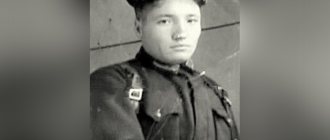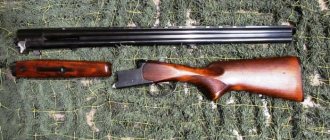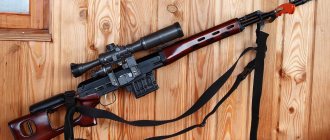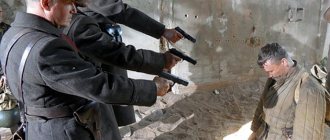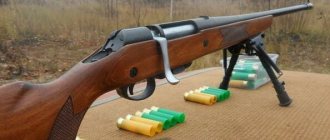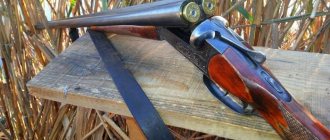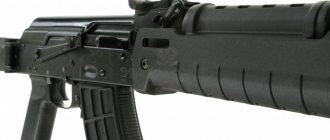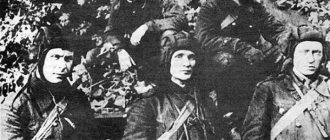| This article requires additional links for verification . |
Mi-17 and troops, Afghanistan, 2009.
Military helicopter
is a helicopter that is either purpose-built or converted for use by the armed forces. The purpose of a military helicopter depends on its design or modification. Most often, military helicopters are used to transport troops, but transport helicopters can be modified or converted to perform other missions, such as search and rescue (CSAR), medical evacuation (MEDEVAC), airborne command post, or even weaponized for ground attack. Specialized military helicopters are designed to perform specific missions. Examples of specialized military helicopters are attack helicopters, surveillance helicopters, and anti-submarine warfare helicopters.
Content
- 1 Types and roles 1.1 Equipment
- 1.2 Combat helicopters
- 1.3 Transport helicopters
- 1.4 Observation helicopters
- 1.5 Marine helicopters
- 1.6 Multi-purpose and rescue
- 1.7 Training helicopters
- 1.8 General purpose helicopters
- 2.1 High intensity warfare
- 6.1 Further reading
Types and roles[edit]
Military helicopters play an integral role in the sea, land and air operations of modern militaries. Typically, manufacturers will develop airframes in different weight/size classes that can be tailored to different roles through the installation of special equipment. To minimize development costs, basic airframes can be stretched and shortened, equipped with new engines and electronics, and all mechanical and flight systems interfaced with new fuselages to create new aircraft. For example, the UH-1 gave rise to a number of engine stretching and retuning derivatives, including the AH-1.
Modern helicopters have adopted modular systems that allow the same airframe to be configured for different roles, for example the EH-101 in Royal Navy service can be quickly configured for anti-submarine or transport missions in a matter of hours. To still maintain flexibility and limit costs, it is possible to install the airframe but not with the system, for example the US Army all AH-64D variants are equipped to operate with the Longbow radar system, but not with it. enough kits were purchased to equip the entire detachment. Systems can only be installed on those airframes that require it, or when finances allow for the purchase of a sufficient number of units.
Equipment [edit]
Most military helicopters are armored to some degree; however, all equipment is limited by installed power and payload capacity and installed equipment payload limitations. The most extensive armor is placed around the pilots, engines, transmission and fuel tanks. Fuel lines, control cables and tail rotor power can also be protected by Kevlar armor. The most armored helicopters are assault, assault and special forces. In transport helicopters, the flight deck may or may not be fully armored, the compromise being to provide passengers with Kevlar-lined seats but leave the compartment largely unarmored. Survivability is enhanced by redundancy and placement of components to protect each other. For example, the Blackhawk family of helicopters use two engines and can continue to fly on only one (under certain conditions), the engines are separated by a transmission and placed in such a way that when attacked from any one flank, the engine on that flank acts to protect the gearbox and engine on the other side from damage.
Avionics or avionics, such as radio communications and navigation aids, are common on most military helicopters. Specialized avionics such as electronic countermeasures systems and friend or foe identification systems are dedicated military systems that can also be installed on military helicopters. Other mission payloads or systems are installed either permanently or temporarily, depending on the specific mission requirements; optical and infrared cameras for reconnaissance helicopters, sonar and search radars for anti-submarine helicopters, additional radio transceivers and computers for helicopters used as airborne command posts.
Improvements to armor, fire extinguishing systems, dynamic and electronic systems are invisible to casual inspection; As a cost-cutting measure, some countries and services have been inclined to use commercial helicopters for military purposes. For example, it was reported that the PRC is rapidly replenishing its attack helicopter regiments with a civilian version of the Mi-17. [1] These helicopters, without armor or electronic countermeasures, would work well enough for training and photography, but using them as attack aircraft in actual combat situations would be suicidal. China appears intent on upgrading these helicopters with locally produced electronics and armor whenever possible, freeing up available funds to quickly create enough regiments to equip each of its group armies, allowing helicopter operations experience to accumulate widely.
Combat helicopters[edit]
Main article: Combat helicopter
Attack helicopters are helicopters that are used in anti-tank and air support roles. The first of the modern attack helicopters was the Vietnam-era AH-1 Cobra, which pioneered the classic format: the pilot and weapons officer sit tandem in a narrow fuselage, chin-mounted guns, and rockets and missiles mounted on short wings. To enable them to find and identify their targets, some modern attack helicopters are equipped with high-performance sensors [2], such as millimeter wave radar.
- Combat helicopters
- Russian large combat helicopter Mi-24P Hind-F and low-power military transport.
- A Westland WAH-64 Apache Longbow attack helicopter owned by the British Army.
- SuperCobra attack helicopters refuel at FARP during Operation Iraqi Freedom
- Mi-28
- Ka-52 in flight
Transport helicopters[edit]
Main article: Transport helicopter
Transport helicopters are used to transport personnel (troops) and cargo in support of military operations. In larger militaries, these helicopters are often built specifically for military operations, but commercial aircraft are also used. The advantage of using helicopters for these operations is that personnel and cargo can be moved to and from locations without requiring a runway for takeoff and landing. Cargo is carried internally or externally by slung cargo, where the cargo is suspended from a tie-down point underneath the aircraft. Loading and unloading of personnel is carried out first while the helicopter is on the ground. However, when the terrain does not allow even helicopters to land, personnel can also be picked up and dispatched using special devices such as rescue lifts or special cable cars while the aircraft hovers overhead.
Air assault is a military strategy that relies heavily on the use of transport helicopters. An air assault involves individualized assault forces that are assembled in a pick-up zone and prepared for sequential transport to a landing zone (LZ). The idea is to use helicopters to transport and land large numbers of troops and equipment in a relatively short period of time to attack and overwhelm a target near the LZ. The advantage of air assault over air assault is the ability of helicopters to continuously resupply forces during an operation, as well as transport personnel and equipment to their previous location or subsequent location if the mission requires it.
- Transport helicopters
- Mi-17 is the transport of the government of Kazakhstan. [note 1]
- Wiesel deploys from a CH-53
- SN-21S with a 105 mm howitzer in limbo
- UH-1D helicopters lifting members of a US infantry regiment into the air, 1966.
- Mi-26 of the Russian Ministry of Emergency Situations
Observation helicopters[edit]
The first reconnaissance and observation aircraft were balloons, followed by light aircraft such as the Taylorcraft L-2 and Fieseler Fi 156. When military helicopters first appeared, their ability to maneuver and stay in one place made them ideal for reconnaissance. Initially, observation helicopters were limited to crew visual observation, and most helicopters had rounded, well-glazed cockpits for maximum visibility. Over time, the human eye has been supplemented with optical sensor systems. Today, these include low-light televisions and the upcoming infrared cameras. They are often mounted in a stabilized mount along with multifunctional lasers capable of acting as laser rangefinders and target designators for weapon systems. [3]
Due to the nature of the mission, the primary weapons of an observation helicopter are its sensor unit and communications equipment. Early surveillance helicopters were effective in calling in artillery fire and airstrikes. With advanced sensor suites, they can also provide endpoint targeting for ATGMs, laser-guided bombs and other missiles and munitions launched by other armed aircraft. [4] [5] Observation helicopters can also be armed with combinations of cannons and missile pods, and sometimes anti-tank guided missiles or air-to-air missiles, but in smaller numbers than larger attack helicopters. [6] These weapons were primarily intended for counterintelligence warfare—to destroy enemy intelligence assets—but they could also be used to provide limited direct fire support or close air support.
- Observation helicopters
- Gazelle helicopter of the French ALT.
- An OH-58 Kiowa showing its mast mounted sight and missile pod.
- Kawasaki OH-1.
Marine helicopters[edit]
See also: Maritime patrol aircraft
One of the first practical uses of helicopters when the R-4 and R-5 became available to the US and UK militaries was deployment from naval cruisers and battleships, first complementing and then replacing catapult-equipped surveillance aircraft. Another niche in early helicopter capabilities was aircraft security, whose mission was to identify pilots who had gone tumbling near an aircraft carrier.
As helicopter technology has evolved with increased payload and endurance, anti-submarine warfare (ASW) has been added to the helicopter's repertoire. Initially, helicopters were used as weapons delivery vehicles, attacking with aerial torpedoes and depth charges based on information provided by their lead ships and other warships. In the 1960s, the development of turboshaft engines and transistor technology changed the face of maritime helicopter aviation. The turboshaft engine allowed smaller helicopters such as the Westland Wasp to operate on smaller ships than their piston engine predecessors. The introduction of transistors allowed helicopters such as the SH-3 Sea King to be equipped with built-in dive sonar, radar, and magnetic anomaly detection equipment. The result was an aircraft capable of responding more quickly to underwater threats to the fleet without waiting for instructions from fleet vessels.
Today, maritime helicopters such as the SH-60 Seahawk and Westland Lynx are designed to operate from frigates, destroyers, and similarly sized vessels. The desire to carry and operate two helicopters from ships the size of frigates and destroyers has influenced the maximum size of helicopters and the minimum size of ships. Increasing miniaturization of electronics, more advanced engines and modern weapons now allow even a modern destroyer-based multi-mission helicopter to operate almost autonomously in anti-submarine, anti-submarine, transport, search and rescue and reconnaissance roles.
Medium and large sized helicopters are operated from aircraft carriers and land bases. In the British, Spanish and Italian navies, larger helicopters form the main anti-submarine force of aircraft carriers. When operating from shore bases, helicopters are used as anti-submarine pickets to protect against enemy submarines loitering outside military ports and harbors; their endurance and payload give them advantages over smaller helicopters.
Soviet naval helicopters operating from its cruisers had the additional role of guiding the cruiser's long-range anti-ship missiles.
Marine helicopters are marine aircraft designed for operation from ships, which include enhanced protection against saltwater corrosion, protection against water ingress, and the ability to force-land at sea.
- Marine helicopters
- Royal Navy Merlin HM1 anti-submarine warfare helicopter in 2007
- SH-60B Seahawk 2 helicopters
- Ka-27 shipborne helicopter, showing its counter-rotating rotor system, and bulbous radar radome
- Harbin Z-9
- NH-90
Multi-mission and rescue[edit]
When helicopters entered service, they were quickly deployed for search and rescue [note 2] and medical evacuation missions. During World War II, Flettner Fl 282s were used in Germany for reconnaissance, and Sikorsky R-4s were used by the United States to rescue downed aircrews and wounded personnel in remote areas of the Sino-Burma Indian Theater from April 1944 until the end of the war. . The use of helicopters for combat rescue increased during the Korean War and the Algerian War. During the Vietnam War, the USAF acquired Sikorsky S-61R (Jolly Green Giant) and CH-53 Sea Stallion (Super Jolly Green Giant) helicopters for the CSAR mission. [7]
- Multi-role and rescue helicopters
- Bell 47 with panniers for transporting patients.
- Rapid movement in search and rescue operations involving the HH-60G Pave Hawk.
- Patient transport unit for the German Army Air Corps CH-53G.
Training helicopters[edit]
Some services use a version of their attack helicopters, usually in the light class, to train pilots. For example, the British used the Aérospatiale Gazelle both in combat and as a training aircraft. Some services also have an initial training phase in which very basic helicopters are used. For this purpose, the Mexican Navy acquired a number of commercially available Robinson R22 [8] and R44 helicopters.
Utility helicopters[edit]
Main article: General purpose helicopter
Utility helicopter
is a multi-role helicopter. The versatile military helicopter can perform roles such as ground attack, air attack, military logistics, medical evacuation, command and control, and troop transport. [9]
Modern Russian attack helicopters
One of the most important points of the current State Armament Program (SAP) is the supply of over 1,100 helicopters. By 2022, the domestic defense industry must transfer exactly this amount of rotary-wing equipment to the armed forces. Deliveries have already begun and helicopters of seven types and modifications are being supplied to the troops. By the end of the State Program, the number of types may increase by one and a half to two times. During the procurement of new helicopters, special attention is paid to attack vehicles. Until recently, the task of supporting troops and enemy attacks was assigned only to the “old man” Mi-24 and its modifications. Now the air force is receiving three types of combat helicopters, differing from each other in characteristics, equipment and strike capabilities. These are the Mi-35M (a deep modernization of the Mi-24, also known as the Mi-24VM), Mi-28N and Ka-52. Just a few years ago, one could have hoped for continued construction of the Ka-50 helicopter, but as a result it was discontinued in favor of the newer and more advanced Ka-52. Let's try to carefully consider the available attack helicopters, compare and evaluate their capabilities. Unfortunately, some of the technical information on the latest helicopters has not yet become public knowledge, so we will have to be content only with the available official data, even if incomplete. Flight performance
The machines in question differ significantly in design aspects. The machines are made according to the classical design with main and tail rotors. They are also equipped with original X-shaped tail rotors, which have increased efficiency compared to conventional propellers. The Ka-52, in turn, is made according to the traditional Kamov design and has two coaxial rotors. The pros and cons of the schemes used have been the subject of heated debate for several years now, but the designers and military have made their choice: they understand the disadvantages of the classical and pine schemes, but for the sake of the existing advantages they are ready to endure them. In addition, it is of some interest that the main helicopters of the Russian Air Force by 2022 should be the “classic” Mi-28N and coaxial Ka-52. Thus, there is, so to speak, a balance between the schemes.
Ka-52 helicopters of the installation batch in standard serial configuration including the defense complex - board No. 52 and board No. 53, yellow (https://militaryphotos.net)
Helicopter Mi-28N board No. 50 yellow from a batch of helicopters transferred to the Air Force to the airbase 344 TsBPiPLS AA October 8, 2011, Torzhok, Tver region (photo by Sergey Ablogin, https://ablogin.ru/)
All three helicopters differ significantly already at the level of weight and size parameters. The Ka-52 has the smallest dimensions among the machines under consideration. With a maximum take-off weight of 10,400 kilograms, it has a length of 13.5 meters and a rotor diameter of 14.5 m. The Milevsky Mi-28 is slightly larger: a length of 17 meters, a rotor diameter of 17.2 m and a maximum take-off weight of 11.7 tons. The largest of the new helicopters is the Mi-35M, which has a maximum take-off weight of 11,800 kg and a length of over 18.5 meters. It is noteworthy that both helicopters are equipped with the same main and tail rotors, originally developed for the Mi-28N.
The situation with the power plant of helicopters is interesting. All of them, in accordance with the development trends of combat helicopters, are equipped with two engines. This reduces the risks associated with damage to one of the engines and, as a result, increases the survivability of vehicles in combat conditions. In addition, all three helicopters are equipped with TV3-117VMA Klimov family turboshaft engines. The Mi-35M has engines of this model with a take-off power of 2,200 horsepower each, while the Mi-28N and Ka-52 are equipped with later modifications. Thus, the Mi-28N is equipped with VK-2500-02 engines (2200 hp at takeoff), and the Ka-52 is equipped with VK-2500 engines with the ability to “overclock” to 2400 hp. It is worth noting that the indicated power indicators are achieved only for a certain short time. During flight, it is recommended to keep engine power at no more than 1750-1800 horsepower. Moreover, all engines of the TV3-117VMA family have an emergency mode, in which they are capable of reaching the level of 2600-2700 horsepower. True, such power indicators require subsequent additional maintenance.
Engine TV3-117
VK-2500 (upgraded version of TVZ-117)
It is easy to see that in terms of the combination of weight, size and power parameters, the Ka-52 helicopter looks the most interesting. With the maximum permissible weight at take-off engine mode, it has a specific power of up to 460 hp. per ton of weight. For the Mi-35M and Mi-28N this parameter is approximately 370 and 375 hp. per ton, respectively. Thus, the Kamov helicopter, having a higher thrust-to-weight ratio, in theory should have better flight characteristics. However, high power-to-weight ratios are obtained primarily due to the low weight of the structure and, as a consequence, the relatively low combat load. At the same time, a number of features of the concept have led to the fact that the lighter Ka-52 is capable of carrying more equipment and weapons than the Mi-35N. The vehicle has a payload of about two tons, while for the Mi-35M this figure is only 1,780 kg. As for the Mi-28N, it is capable of carrying up to 2,300 kilograms of weapons on an external sling.
The flight parameters of all three helicopters are quite close, although they differ from each other. The maximum speed of all cars is within 310-320 kilometers per hour. At the same time, the Mi-35M and Ka-52, if necessary, can accelerate to 340 km/h, but this speed in the declared characteristics is listed as the maximum permissible. The newer Mi-28N and Ka-52 helicopters outperform the deeply modernized Mi-24 in dynamic and static ceilings. The first indicator for these machines is in the range of 5-5.5 thousand meters, the second is equal to 3600 m. The static and dynamic ceiling of the Mi-35M is 450-500 meters less than these indicators. The Mi-35M cannot boast of a flight range either. Its practical range is 420 kilometers, and in the ferry configuration it can cover up to a thousand kilometers. For the Mi-28N these figures are 500 and 1100, and for the Ka-52 - 520 and 1200 kilometers, respectively.
Mi-35M (https://www.airforce.ru)
It must be taken into account that the maximum flight range, as well as speed and ceiling, in itself is not the most important parameter of a helicopter, but can indicate its capabilities regarding the duration of its stay in the air. The experience of armed conflicts in recent years has shown that a modern combat helicopter must, first of all, be able to carry out long-term patrols of a given area, regardless of the time of day and weather conditions. It was with the help of helicopters that NATO troops hunted regular enemy caravans or even individual militants.
Crew and their protection
The concept of using attack helicopters implies a high risk of being attacked by enemy anti-aircraft weapons. Because of this, all cars of this class have a whole range of crew safety equipment. All three helicopters under consideration - Mi-35M, Mi-28N and Ka-52 - have crews of two people. Based on the results of lengthy disputes, the most profitable scheme was considered to be with two pilots: a pilot and a weapons operator. Previously, it was proposed to assign all duties to one pilot, but the customer, represented by the Ministry of Defense, recognized this option as unpromising and inconvenient. As a result, all new domestic attack helicopters are made two-seater.
As in the case of rotors, the machine differs from Mi helicopters. The latter have a tandem cockpit: the pilot sits behind and above the navigator-operator. On the Ka-52, the commander's workplace is located to the left of the vehicle axis, the operator's seat is to the right. On all three vehicles, weapons operators have the ability to control the helicopter, and pilots can use weapons. At the same time, due to the separation of duties and the corresponding equipment, the pilot cannot fully use the helicopter’s full combat potential. To protect the crew and vital components, all three helicopters have additional armor: armored glass and metal panels. The level of protection for different parts varies. For example, the armored panels of the Mi-28N helicopter cockpit can withstand being hit by a projectile of up to 20 millimeters in caliber.
Cabin of KA-52
Instruments in the cockpits of the pilot (left) and navigator-operator (right) of the Mi-28N helicopter. (photo - Alexey Mikheev, Fomin A. Mi-28N - deliveries are growing. // Takeoff. No. 1-2 / 2011)
In case of an emergency landing at high vertical speed, the Mi-35M, Mi-28N and Ka-52 helicopters have a specially designed landing gear that absorbs part of the impact force on the ground. Most of the remaining impact is absorbed by specially designed seats. In addition, the Ka-52 and Mi-28N helicopters have an ejection system to rescue pilots in case of an accident at high altitudes.
Unguided weapons
For several decades, the main weapons of domestic attack helicopters were barrel systems and unguided missiles, and the use of “smart” ammunition was on a much smaller scale. The new helicopters fully retain all the capabilities for using cannon and missile weapons. The Mi-35M, Mi-28N and Ka-52 helicopters have the ability to carry blocks of unguided missiles of various types and calibers on pylons under the wing, from S-8 (up to four blocks of 20 missiles each) to S-13 (four of five). In addition, the Mi-35M and Ka-52, if necessary, are capable of using up to four S-24 missiles of 240 mm caliber. All three helicopters have the ability to use aerial bombs of various types with a caliber of up to 500 kilograms.
In addition to pylons for hanging weapons, all three vehicles have built-in cannon installations. The Ka-52 and Mi-28N helicopters are equipped with 2A42 (30 mm) automatic cannons, the Mi-35N - GSh-23 (double-barreled 23 mm caliber). Movable cannon mounts mounted on the Mi-28N and Mi-35M allow weapons to be aimed within large sectors horizontally and vertically. The Ka-52, in turn, does not have such an opportunity: its cannon installation is located not in the forward part of the fuselage, but on the right side, which significantly reduces the horizontal aiming sector. Both guns used on helicopters are designed to destroy ground and air targets at ranges of up to two (GSh-23) or four (2A42) kilometers. The guns are aimed using electric drives controlled by the weapons operator. It is noteworthy that the process of aiming the guns affected the capabilities of the pilots. For example, the pilot of a Mi-28N helicopter cannot control the cannon if it is not located along the longitudinal axis of the vehicle and is not in a horizontal position. Only with this arrangement of the gun can the pilot aim using the sighting equipment he has. In all other cases, aiming and firing is carried out by the weapons operator.
Ka-52 board No. 062 yellow, March 2012 (photo - kabuki, https://russianplanes.net/)
ATGM "Ataka-V" and the B-13 NAR unit under the Mi-28N board No. 38 at the exhibition of the MAKS-2011 air show, August 2011 (photo - VLAS, https://militaryrussia.ru/forum)
B-13 NAR block and Strelets launcher with Igla missiles under Mi-28N board No. 38 at the MAKS-2011 air show, August 2011 (photo - VLAS, https://militaryrussia.ru/forum)
Guided weapons
The responsibilities of the navigator-operator also include working with guided weapons. Traditionally, all domestic attack helicopters have the ability to carry anti-tank missiles, and the Mi-35M, Mi-28N and Ka-52 were no exception. The vehicles in question can carry up to 12-16 Sturm or Ataka anti-tank guided missiles. The Ka-52's arsenal consists of Ataka or Whirlwind missiles. These missile systems differ significantly from each other in the characteristics of their missiles and guidance systems.
The oldest complex "Sturm-V" (developed in the 70s) has a radio command guidance system and provides a maximum firing range of five kilometers. The warhead of the 9M114 missile ensures penetration of homogeneous armor up to 650 millimeters thick. The use of a semi-automatic control system in the Sturm complex has led to the fact that the weapon operator, after launch, is forced to hold the aiming mark on the target for some time. This fact to some extent reduces the combat capabilities of the helicopter, since it is forced to remain motionless until the target is hit and will not be able to effectively use jump tactics.
A further development of the Shturm-V was the Ataka-V complex with the 9M120 missile. During the modernization, the characteristics of the rocket improved. Thus, the 9M120 is capable of delivering a warhead at a distance of up to ten kilometers and penetrating up to 800 millimeters of homogeneous armor behind dynamic protection. There is information about the development of a laser homing head for the Ataka missile. The principle of missile guidance based on commands from a helicopter is similar to Sturm. This feature of the Ataka-V complex is a reason for criticism. It is worth noting that at a speed of about 500 m/s, the 9M120 missile reaches its target at maximum range in about 20 seconds. To avoid damage to the helicopter during the “jump,” the onboard control equipment of the “Attack” provides the ability to maneuver with certain restrictions on roll and pitch.
The Vikhr anti-tank missile system with the 9A4172 missile has a laser guidance system and automatic control equipment. The latter independently tracks the target and points the missile at it. The maximum launch range of the Vikhr missile reaches ten kilometers. At a speed of over 600 meters per second, the rocket covers this distance in 15-17 seconds. Thus, the enemy’s air defense may simply not have time to detect and attack the helicopter. In addition, the automatic target tracking and missile guidance system can significantly reduce the workload on pilots. It was this system that became one of the reasons for reducing the crew of the Ka-50 helicopter to one person. The tandem warhead penetrates up to a meter of homogeneous armor.
Despite their attack mission, the Mi-35M, Mi-28N and Ka-52 helicopters have the ability to carry air-to-air guided missiles intended for self-defense. These are the Igla-V missiles (range up to 5-6 km) and R-60 (7-8 km). The number of missiles on the sling depends on the tactical need and the type of helicopter. Thus, the Mi-35M carries only two Igla-V missiles, while the Mi-28N and Ka-52 carry up to four Igla or R-60 missiles.
The first Ka-52 prototype board No. 061 yellow during testing of the operation of a helicopter from Navy ships, Northern Fleet, 09/03/2011 (https://pressa-zvo.livejournal.com)
Mi-28N board No. 36 is yellow, probably with an updated overhead radar. April 1-2, 2012 (photo - kabuki, https://russianplanes.net/)
On-board equipment
Being a deep modernization of the old Mi-24, the Mi-35M helicopter received relatively few serious innovations in the on-board equipment, affecting certain features of its appearance. One of them concerns the installation of a new sighting and navigation system PNK-24, created using developments from the PrNK-28 project for the Mi-28N helicopter. The optical-electronic station, observation instruments and cabin equipment were updated. As a result, the combat potential of the helicopter has increased significantly. It is sometimes argued that at the moment the Mi-35M on-board equipment provides the helicopter with the maximum possible characteristics that a fairly old design can achieve.
The basis of the avionics of the Mi-28N helicopter is the PrNK-28 complex, which ensures flight and combat operations. Weapon control systems, as well as navigation equipment, are integrated into this complex. In addition, PrNK-28 is connected to the N-025 radar station. Its antenna is located in a characteristic spherical fairing above the propeller hub. The use of a radar station significantly expands the capabilities of a helicopter, as it allows it to operate in any weather and at any time of the day. The N-025 radar has two main operating modes: for airborne and ground targets. In the case of ground tracking, the radar in mapping mode “inspects” a sector 120 degrees wide at a range of up to 32 kilometers. Detection and tracking of targets, depending on their EPR, occurs at distances of 12-15 kilometers (tank). Larger objects, such as bridges, are detected by the station from 23-25 km. In air mode, the station antenna performs a circular scan in a sector of 60 degrees in elevation (in the vertical plane). In this case, planes and helicopters are “visible” at a distance of about 15 kilometers. Anti-aircraft missiles and air-to-air ammunition - from five to six kilometers. Thus, pilots have the opportunity to learn about the attack in a timely manner and take all necessary actions.
The avionics system of the Ka-52 helicopter is to some extent similar to that used on the Mi-28N, but has a number of differences. For example, the RN01 “Crossbow” radar station intended for the Ka-52 was initially built according to a two-module design. The antenna of the first block of this radar was planned to be installed under the radio-transparent nose fairing, the second - above the rotor hub. At the moment, all or almost all new production helicopters are equipped with a nose-mounted radar unit, but there is no exact data about the above-hub unit. This original division of the radar system was proposed to improve the characteristics of the complex: the nose antenna can always work only on ground targets, and the above-hub antenna can only work on air targets. Thus, the helicopter becomes capable of responding in a timely manner to various threats, while simultaneously collecting information about the situation in the air and on the ground. The equipment of the Ka-52 helicopter also includes the GOES-520 optical-electronic station, designed for round-the-clock terrain monitoring and target detection. The optical-electronic station is located at the bottom of the fuselage, immediately behind the nose cone.
Ka-52 board No. 94 yellow, summer 2011 (photo - Elvis, https://www.photosight.ru)
Mi-28N onboard No. 16 blue, manufactured in 2010 with a full standard set of on-board defense systems, 01/17/2011 (photo - Sergey Ablogin, https://www.airliners.net)
Results
As you can see, all modern Russian attack helicopters are both similar and different from each other. The similarities are due to the general views of the military on the appearance of a modern rotorcraft, and the differences are caused by the differing opinions of designers from different companies. However, all new helicopters - primarily the Ka-52 and Mi-28N - have more similarities than differences. Thus, they are capable of carrying unguided and guided weapons, as well as carrying out attacks from a distance of up to ten kilometers (Attack and Sturm ATGMs). Another characteristic feature of these helicopters is the presence of a built-in radar station. If the issue with the crossbow radar module "Arbalet" is resolved in favor of its installation, then one more point will be added to the similarities between the Mi-28N and Ka-52.
As a matter of fact, the Ka-52 and Mi-28N, being modern helicopters, also lay claim to the title of combat vehicles of the near future. Judging by the current trends in the development of attack helicopters, with timely upgrades they are quite capable of becoming such. But the Mi-35M is already raising certain doubts. First of all, this is due to the great age of the original Mi-24, as well as the poorly proven idea of a flying infantry fighting vehicle. In order to remove the cargo-passenger cabin from the Mi-35M, which often becomes the subject of criticism, the entire vehicle will have to be redone, which clearly does not fit into the idea of modernizing old equipment. Therefore, the Mi-35M project now looks like an attempt to provide the armed forces with modern equipment without spending a lot of time on its creation and launch of production. Accordingly, the Mi-35M is unlikely to be purchased in large quantities and will serve as a kind of temporary measure in anticipation of a large number of new Mi-28N and Ka-52.
To justify the Mi-35M, it is worth saying that this helicopter is not as bad as it seems at first glance. The lack of a radar and the presence of an “extra” cabin does not allow it to compete on equal terms with other modern domestic and foreign attack helicopters, however, even in this configuration, the Mi-35M has greater potential compared to the existing fleet of Mi-24s of various modifications. In other words, the Mi-35M is currently more of a “transitional link” between old and new technology than a full-fledged combat weapon, built, as they say, to last. This may explain the technical differences of this helicopter from other new machines, and the relatively small purchase plans.
In the coming years, the domestic air force will receive about fifty Mi-35M helicopters. At the same time, by now, such a number of Mi-28N helicopters are already serving in the air force, and the total number of ordered Ka-52s is approaching one and a half hundred. Perhaps, the military’s views on the required number of helicopters of one type or another perfectly illustrate the prospects of combat vehicles and their compliance with the requirements. It is quite obvious that the Ministry of Defense, when planning the future of military aviation, gives the highest priority to the new Ka-52 and Mi-28N, and not to the modernization of the “old man” Mi-24. It is these helicopters that will have to become the main striking force of front-line aviation by the early twenties and remain in service over the coming years. So the protracted work on the Arbalet radar for the Ka-52 or some problems with developing technologies and weapons for new equipment are worth the time spent: new helicopters are being made for the future and it is better to lose a little time now than not have good modern equipment later.
Based on materials from the sites: https://airwar.ru/ https://militaryrussia.ru/ https://arms-expo.ru/ https://kamov.ru/ https://mi-helicopter.ru/ https: //klimov.ru/ https://phazotron.com/ https://twower.livejournal.com/
Tactics and operations[edit]
Although helicopters are not essential for combat, they provide a significant advantage to their operators as they increase force. For maximum impact, helicopters are used in a combined approach. [10]
High intensity warfare[edit]
Alouette anti-tank helicopter of the first generation of the German army, armed with SS.10 missiles
High-intensity warfare is characterized by the presence of large groups of conventional military forces, including massive formations of tanks, with a significant air defense system. The helicopter's armament and tactics were modified to accommodate less favorable flight conditions. Anti-tank missiles such as the SS.11 and Aérospatiale SS.12/AS.12 have been developed and installed on French military helicopters. In turn, the US adapted its BGM-71 TOW for helicopter firing and eventually developed the AGM-114 Hellfire. Meanwhile, the Soviet Union adapted the 3M11 Phalanx missile to fire from the Mi-24.
Such a combination of an OH-58 and an AH-1 from Hawaii, such a combination would have formed a hunter-killer team during the Cold War. [7]
In the air, attack helicopters armed with anti-tank missiles and one or more unarmed or lightly armed reconnaissance helicopters operate in concert. A reconnaissance helicopter flying at low altitude in landing conditions attempts to both locate enemy armored columns and mark approaches and ambush positions for attack helicopters. The latest models of reconnaissance helicopters include laser designators to guide missiles fired from combat helicopters. Once a target is located, the reconnaissance helicopter can locate it and then guide the attack helicopter's missile where it will fire. Attack helicopters only need to emerge from cover briefly to fire their missiles before returning to a hidden location. [7] Late development of attack helicopters such as the Mi-28N, Kamov Ka-52 and AH-64D Longbow incorporated sensors and command and control systems to reduce the need for reconnaissance helicopters.
To increase the combat endurance of these missile-armed helicopters, transport helicopters were used to deliver technicians, reloads and fuel to forward positions. The establishment of these forward armament and refueling points (FARPs) at predetermined locations and times allowed armed or attack helicopters to rearm and refuel, often with engines running and rotors spinning, and quickly return to the front lines. [7]
Low intensity warfare[edit]
Iraqi unit prepares to board an American Blackhawk for Monetny
Main article: Counterinsurgency
In counterinsurgency (COIN), government forces establish a presence at permanent or temporary military bases from which patrols and convoys are dispatched. Government forces seek to impede the actions of rebel forces and to capture or kill those who do so. Troop operations from permanent bases connected by a fixed road network become a weak point. Stationed rebels and local sympathizers can covertly observe such installations and gather information about patrol and convoy schedules and routes. With this information, insurgents can time their operations to evade COIN forces or plan ambushes to defeat them, depending on their own tactical situation.
Helicopters return some surprise and tactical flexibility to the COIN commander. Patrols do not have to start and end at the same location (the main entrance to the local compound), and supply convoys do not have to follow the same roads and highways. During the Rhodesian Bush War, the Rhodesian military developed and refined "Firepower" tactics using small flights of light helicopters, helicopters would be equipped as gunships to directly attack insurgents with air fire, and as aerial command/observation posts or troops. transport. Once contact was made with enemy guerrillas, the paratroopers would be dropped by the Dakota and would act as "beaters" to force the guerrillas into stopping groups dropped from helicopters.
During the Troubles, the Provisional Irish Republican Army (IRA) became adept at avoiding conventional, fixed roadblocks and patrols. To prevent predictable patterns, patrols were deployed from helicopters known as Eagle Patrols and were then able to disrupt the IRA's ability to move personnel and weapons. [7] In the aftermath of the American invasion of Iraq, helicopters were used as aerial supply trucks and providing transport to prevent impact ambushes set up by the Iraqi insurgency. [eleven]
Due to the cost and complexity of training and support requirements, rebel forces rarely have access to helicopters.
Multi-role helicopters
Multi-purpose (or general purpose) helicopters are designed to solve a wide variety of tasks, both military and civilian. Depending on the task at hand, a multi-purpose helicopter can spray the ground with both water and fire.
Sikorsky UH-60 Black Hawk
The letters UH in the Black Hawk acronym stand for Utility Helicopter. The Yandex translator translates this phrase simply as “helicopter”. This is, in fact, the exact translation. It is a versatile workhorse for military and civilian applications. For transportation of passengers and cargo. Like the Mi-8, well known in Russia.
This Sikorsky model was developed and put into production as part of the solution to the problem of air transport support for the tactical tasks of the United States Army. The vehicle was supposed to ensure the delivery of 10 armed and equipped soldiers over a distance of several hundred kilometers. At the same time, the flight altitude had to ensure inaccessibility for shelling from the enemy.
It was decided to build helicopters, not airplanes, not tiltrotors. The helicopter does not require a runway; a cleared area is enough for it. And this is exactly what is needed to move over tactical distances.
Boeing, Sikorsky, Lockheed Bell Helicopter submitted applications for the competition. Sikorsky proposed a traditional single-propeller with two turboshaft engines (TVD) from General Electric. And he won. The device was adopted first by the US Army, and then by the Navy and Air Force. In total, more than 4,000 cars have been produced since 1977, and production continues.
Mi-8
Mi-8, and you don’t need to add anything. Neither the developer, nor the manufacturer, nor any indexes need to be mentioned. And so everything is clear - Mi-8 is Mi-8. This is the most legendary helicopter in the world. A true masterpiece created in 1961 under the leadership of the great Soviet aircraft designer Mikhail Leontyevich Mil - Hero of Socialist Labor, laureate of the Lenin and State Prize of the USSR.
The Mil design bureau in Lyubertsy, near Moscow, created several masterpieces, including the Mi-12, which set a world record for payload that has not yet been broken - 40 tons to an altitude of 2200 meters. But the Mi-8 is the most legendary. The Mi-8, like the Black Hawk, is a true hard worker, a reliable worker in civil and military service.
Over the entire production period, more than 12,000 Mi-8s were produced. Also a world record for twin-engine helicopters. Great helicopter!
Development by KB Mil. The classic Mi-8 model is the most common twin-engine helicopter in the world
It is interesting that during the period of mass privatization in the nineties of the last century, almost 9% of the joint-stock company “Moscow Helicopter Plant named after M. L. Mil” was bought not by anyone, but by Mil’s global strategic competitor as a developer of helicopter equipment, “Sikorsky International Operations Corporation, Inc.” " In a certain sense, this can be interpreted as a return to the homeland of Igor Sikorsky, a native of Russia. Back in the tenth years of the 20th century, Igor Sikorsky designed the first model of his helicopter, and after emigrating to the United States, he became one of the pioneers of American helicopter construction. And now his brainchild owns a tenth of the famous Russian helicopter company.
Bell UH-1 Iroquois
The Iroquois is the same helicopter that was replaced by the UH-60 from Sikorsky. But Sikorsky did not break the great Iroquois record. The Bell UH-1 Iroquois sold an unprecedented 16,000 copies around the world, at least if you take into account all 60 very different single-engine and twin-engine modifications. For its time, the car was excellent, sold all over the world, took part in hostilities many times and proved itself very well.
Many hundreds of copies of the latest modifications of the Iroquois are in service in the armies of dozens of countries in Europe, the Middle East, and America.
Manufacturers[edit]
The Helibras HM-1 Pantera is being built in Brazil.
Main article: Helicopter manufacturers
The largest helicopter manufacturers in Western Europe are currently AgustaWestland and Eurocopter Group. In America, the three remaining large companies are Boeing (Boeing Vertol and McDonnell Douglas), Bell Helicopter and Sikorsky Aircraft.
In Japan, the three main helicopter manufacturers are the aircraft arms of Japanese conglomerates Mitsubishi, Kawasaki and Fuji Heavy Industries. These companies initially followed a business model based on forming strategic partnerships with foreign, usually U.S., companies that licensed production of those companies' products, while building their own helicopter design and manufacturing capabilities through collaboration and technology transfer.
In the Soviet planned economic system, Mil and Kamov OKB were responsible only for the development of helicopters. As a result of the reorganization of the helicopter industry in Russia, a holding company was created, uniting Mil, Kamov and factories for the production and maintenance of helicopters.
Transport helicopters
Helicopters primarily designed to transport passengers and cargo are usually called transport helicopters.
Sikorsky CH-53E Sea Stallion
The letters CH in the name stand for Cargo helicopter, that is, a cargo or transport helicopter. Sea Stallion means Sea Stallion. The CH-53 family is a whole group of modifications. The names of the first of them ended with the word “stallion”: super or sea. They were made for the Marine Corps. The first of the Stallions, the CH-53M, was tested in 1970. Tests showed the helicopter's insufficient carrying capacity. It had to be increased by 80%. At the same time, the product had to remain compact enough to be launched from a sea-going helicopter carrier. Sikorsky got down to business. Engineers changed the layout and added a third engine. The modification was called CH-53E Super stallion, that is, “super stallion”. The super stallion had a lifting capacity of 16 tons when carrying cargo on a sling. The range was 92 km. The new helicopter made its first flight in 1974. Serial production began 6 years later. And in 1981, the US Marine Corps received the first CH-53E with a cargo compartment, which can accommodate 55 paratroopers or 13 tons of cargo on seven standard pallets measuring 3 x 4 feet.
In 2012, the CH-53 series was withdrawn from service. A total of 522 units were produced.
Mi-26
Heavy helicopter Mi-26, developed at the Mil design bureau. This is the most powerful helicopter in Russia. And the most powerful mass-produced helicopter in the world. When suspended, it can transport a very large load - 20 tons. In terms of carrying capacity, it is noticeably superior to its closest competitor, the CH-53E.
Mi-26. World record holder for carrying capacity. 20 (Twenty) tons
The MI-26 made its first flight back in 1977. And they still continue to produce it in Rostov. Moreover, the Mil design bureau continues to improve it; now a modification of the Mi-26T2 is being prepared for release, with a new set of on-board avionics. The smoking room is alive, a good helicopter!
Boeing CH-47 "Chinook"
Chinook is a Native American tribe. This is exactly what Boeing engineers named their transport helicopter, following certain traditions. It has a memorable profile due to its design. The device has two main rotors. Moreover, they are not located coaxially - one above the other, which is often the case, but next to each other. One is in the front part of the fuselage, the second is in the rear. This arrangement shows its advantages in solving a number of complex engineering problems, such as the evacuation of damaged large aircraft to their deployment sites.
Mi-24
The Mi-24 can be considered a multi-purpose helicopter with a certain degree of convention. Although its compartment does provide for the transportation of 8 military personnel with weapons and special uniforms, many experts consider the Mi-24 as an attack helicopter. Moreover, it is the second striker after the AH-64 in terms of prevalence, and the second after the AH-1 in terms of production.
Links[edit]
- Kanwa Defense Review No26, "China's 20-Year Effective Army Air Corps Buildup," February 2007.
- Give us an enemy to fight, says the head of Britain's Apache helicopter fleet.
- Rotary aircraft: doctrinal development
- ↑
OH-58D Kiowa Warrior Reconnaissance/Attack Helicopter, USA - ↑
Comanche's Child: ARH-70 Armed Reconnaissance Helicopter - ↑
Filling Comanche Shoes - ^ abcde Cacutt, Len (1989). The battle . Aerospace Publishing LLC p. 185. ISBN 1-55521-240-9.
- Air Force Month, February 2001, "Mexico Navy Acquires Robinson R22s"
- Farlex, Inc (2012). "Working Helicopter". Retrieved January 10, 2012.
- Rotary Air Force Plans
- "Iraq shoots down US helicopters". BBC Online. February 4, 2007. Retrieved October 4, 2007.
Further reading[edit]
- Boyne, Walter J. (2011). How the helicopter changed modern warfare
. Pelican Publishing. ISBN 1-58980-700-6. - FM 1-100 Army Aviation Operations since 21 February 1997, Department of Headquarters of the Army at GlobalSecurity.org
- Doctrine FM 1-108 for Army Special Operations Aviation Forces, November 3, 1993, prepared by Headquarters Army at GlobalSecurity.org
- FM 1–111 "Aviation Brigades" since October 27, 1997, data from the Army Headquarters at GlobalSecurity.org.
- FM 1-112 Attack Helicopter Operations April 2, 1997, Department of the Army Headquarters at GlobalSecurity.org
- FM 1-113 Utility and cargo helicopters since 25 June 1997, Department of the Army Staff at GlobalSecurity.org
- FM 1-114 Aviation Cavalry Squadron and Troop Operations since 1 February 2000 by the Department of Staff of the Army at GlobalSecurity.org
- FM 1-120 Army Air Traffic Service Emergency and Combat Zone Operations since 22 May 1995, Department of the Army Headquarters at GlobalSecurity.org
- FM 1-140 Helicopter Artillery dated 29 March 1996, Department of the Army Staff at GlobalSecurity.org
- FM 3-04.500 Army Aviation Maintenance since 26 September 2000, Department of the Army Staff at GlobalSecurity.org
- FM 90-4 Air Assault Operations 16 March 1987, Department of the Army Staff at GlobalSecurity.org

